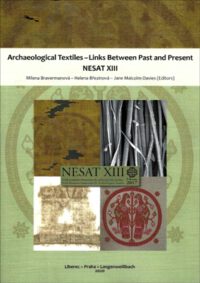This book presents results of the 1980-1989 archaeological investigation at the Eneolithic hillfort of Denemark. It offers a full description of archaeological contexts (settlement features and fortification, reconstruction of the two building phases) and a detailed treatment of the finds (ceramics, stone, bone, and copper artefacts) including environmental analyses. The settlement, at first consisting of 18 dwellings and fortified by a palisade, was provided with six lines of fortification in the second phase and served residential as well as ritual purposes. To date, this site remains unique in the context of the Central European Middle Eneolithic.
Supplementum 18: Kutná Hora – Denemark. Hradištì rivnácské kultury (ca 3000-2800 pr. Kr.). Kutná Hora – Denemark. Ein Burgwall der Rivnác-Kultur (ca. 3000-2800 v. Chr.).
29,00 €
| Gewicht | 750 g |
|---|---|
| Bestellnr | 6-2-18 |
| Produktgruppe | Verkaufsprogramm |
| Reihe | Tschechische Literatur |
| Hauptgruppe | Památky archeologické – Supplementum (Ergänzungsbände) |
| Untergruppe | |
| ISBN | |
| KurzbezTitel | Supplementum 18: Kutná Hora – Denemark. Hradištì rivnácské kultury (ca 3000-2800 pr. Kr.). Kutná Hora – Denemark. Ein Burgwall der Rivnác-Kultur (ca. 3000-2800 v. Chr.). |
| Autor | Zápotocký, Milan – Zápotocká, Marie |
| Erscheinungsjahr | Praha: Archeologický ústav AV CR, 2008 |
| TechnischeAbgaben | 586 pp. with figs., tabs. and graphs. Czech with German and English summaries. |
| Inhalt | This book presents results of the 1980-1989 archaeological investigation at the Eneolithic hillfort of Denemark. It offers a full description of archaeological contexts (settlement features and fortification, reconstruction of the two building phases) and a detailed treatment of the finds (ceramics, stone, bone, and copper artefacts) including environmental analyses. The settlement, at first consisting of 18 dwellings and fortified by a palisade, was provided with six lines of fortification in the second phase and served residential as well as ritual purposes. To date, this site remains unique in the context of the Central European Middle Eneolithic. |
| Besonderheiten |






